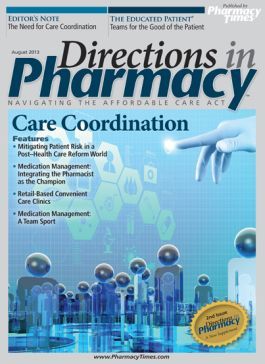Publication
Article
Pharmacy Practice in Focus: Oncology
Teams for the Good of the Patient
The ideal way to treat patients is to make them a member of the team. The Grand-Aides program is an innovative workforce model that successfully uses each member to their maximum capacity.


The ideal way to treat patients is to make them a member of the team. The Grand-Aides program is an innovative workforce model that successfully uses each member to their maximum capacity.
Access to care is currently inadequate for many Americans. However, the approach to improving access is more complex than increasing the projected number of physicians and nurses. Shortages of 90,000 physicians (45,000 generalists and 45,000 specialists), 1.2 million nurses, and 150,000 pharmacists are projected 10 years from now. The professional associations have called for increases in the number of graduates. In the 10 years between 2002 and 2011, US schools graduated a total of 16,888 additional physicians. At that rate, it would take 53 years to close the gap.
Therefore, any attainable increase in the number of physicians, nurses, and pharmacists will not put a significant dent in the projected shortages. The most effective way to improve effectiveness and efficiency is to create teams with roles that make sense, and to leverage each of the team members to the top of their competency.
The Patient as Team Member
The ideal is to begin with the patient as a member of the team. The patient and family must be taught in a personalized manner that works for them. We often forget that 50% of Americans have an IQ of less than 100. We are using a questionnaire that asks patients how they want to be educated and each is placed into one of 8 groups; for example, some just want to read, but many want personal teaching.
We have found in our Grand-Aides program, where certified nurse aides act as extenders for nurses and nurse practitioners and visit the home every day for the first 5 days after hospital discharge (and then as often as necessary), that many of the problems causing readmission in the first or second week relate to a lack of understanding of the medication regimen and a lack of medication adherence.
Certified nurse aides are terrific teachers—but they also have the experience to see when a patient might be saying they are taking their medication, and they are not. Grand-aides have 6 different approaches to medication adherence. Our early data show a 53% reduction in 30-day readmissions for patients with congestive heart failure using Grand-aides.
Other members of the team are vital too, and their roles are fitting to their maximum competency. In some programs, pharmacy technicians do a great deal of teaching and may work with pharmacists on medication reconciliation.
Navigators Help Patients
“Navigators” help patients literally to navigate the system—from keeping appointments to picking up prescriptions to providing transportation and finding the way among increasingly complex hospitals. They may also (in a similar way to Grand-Aides) pick up patient context: how they actually use the medications or don’t, or what their feelings are about the medications. These navigators also work with pharmacists to understand when the prescriptions are not being refilled—and in some cases, why not.
Community health workers are more social work extenders and have provided connections to community programs, helping patients enroll in programs such as Medicaid and providing translation services.
Teams require a shared purpose—and that should be easy. Take care of the patient and family and work together to make that happen. But many health care professionals did not learn to play well in kindergarten and behavior as individuals comes more naturally.
So, what do we need? To recognize that there are numerous roles that can be filled by non-professionals. Provide team training. This does not come naturally to many people, including the team leader. Create regulations facilitating team care in both certification/licensure and payment mechanisms. This is not always easy: some professionals are so stuck in their silos that they block other members of the team from functioning at their maximum competency. Despite recommendations from the Institute of Medicine, for example, many physician groups are blocking nurse practitioners from functioning as they are licensed to do. Finally, keep the eye on the patient and quit looking in the mirror.
Arthur Garson, Jr, MD, MPH, is the director of the Institute for Health Policy and professor of public health sciences and public policy at the University of Virginia. He created the Grand-Aides program, an innovative workforce model in which health care workers, “with the characteristics of a good grandparent, no matter how young,” under close supervision by a professional, use protocols by home and telephone visits with portable telemedicine to provide simple primary care as well as prevention and chronic disease management. Dr. Garson has been a visiting professor in more than 100 institutions and is a member of the faculty of the Children’s Hospital in Paris. He has served on the White House Panel on Public Policy and was president of the American College of Cardiology.Donna M. Green, RN, BS, is the chief executive officer of Grand-Aides, LLC. She began her career in bedside critical care nursing and then nursing administration. She has administrative leadership experience in home health and infusion therapy agencies and more than a decade in private sector medical product development.







